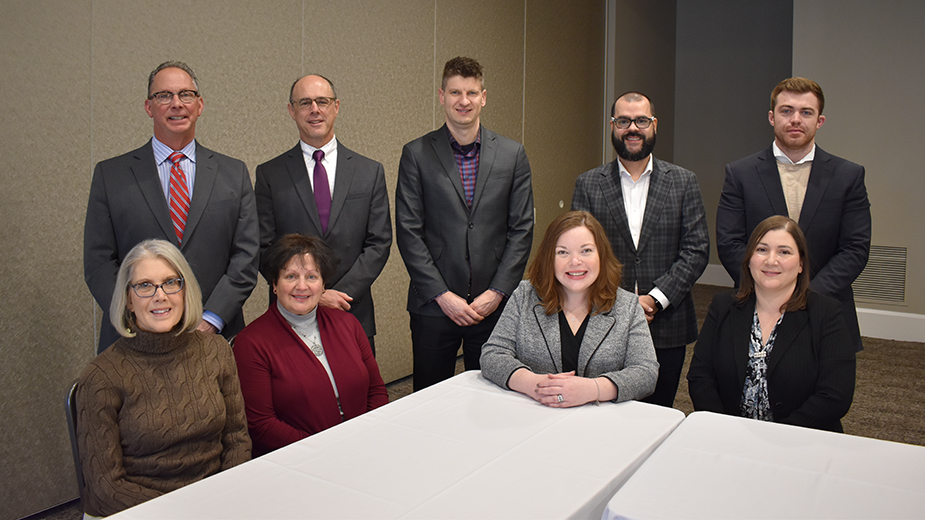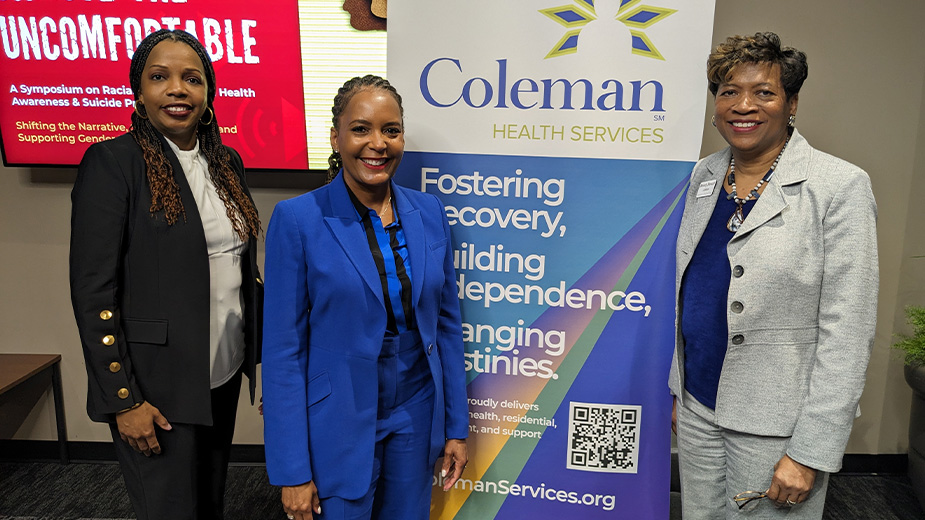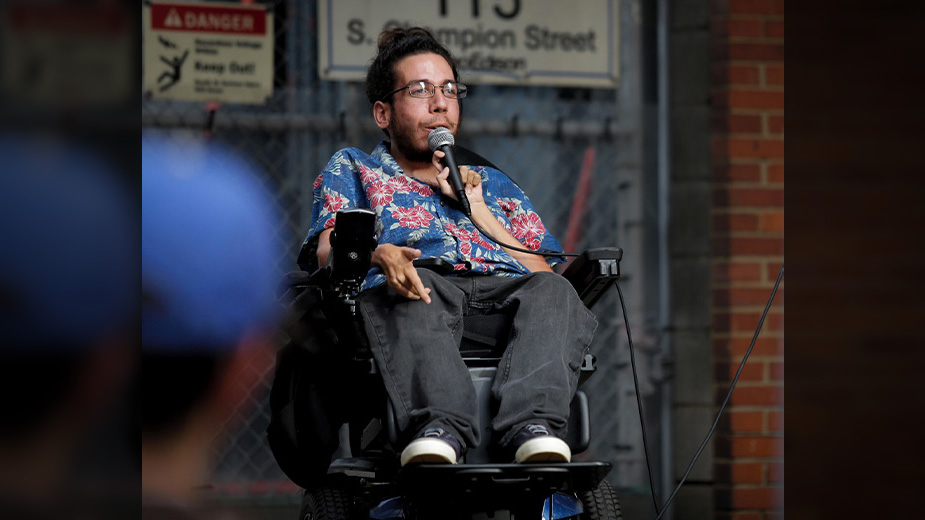Repopulation Roundtable: Who, Why and How?
The Business Journal roundtable on repopulating the Mahoning and Shenango valleys took place Feb. 15 at Waypoint 4180 in Canfield. Participating were Christopher Colon, Guy Coviello, Angelica Diaz, James Kinnick, Emil Liszniansky, Lisa Long, Jake Rickert, Julie Michael Smith and Nancy Voitus.
Colon is a co-founding director of Thrive Mahoning Valley, which works on welcoming immigrants and refugees. Coviello is president and CEO of the Youngstown/Warren Regional Chamber. Diaz is executive director of Youngstown OCCHA, the Organization Civica y Cultural Hispana Americana, a nonprofit social services agency. Kinnick is the executive director of the Eastgate Regional Council of Governments. Liszniansky is a consultant with Envision and special projects coordinator for Eastgate. Long is financial resources development director of the Youngstown Area Jewish Federation and its CEO-designate. Rickert is director of workforce development at Penn-Northwest Development Corp. Smith is a consultant to Mahoning Valley Manufacturers Coalition and is working with its counterpart in Mercer and Lawrence counties, Pa. Voitus is executive director of Catholic Charities Regional Agency, also a nonprofit social services agency that has served Greater Youngstown since the late 19th century.
Also present were Business Journal videographers Steve Peterson and Maggie Young and deputy managing editor George Nelson who photographed the participants. Publisher Andrea Wood moderated the discussion. Copy editor Dennis LaRue edited the verbatim transcript prepared by certified court reporter Mary J. Carney.
BUSINESS JOURNAL: Why is repopulation vital to the future of our region and economic prosperity? What do the demographics show?
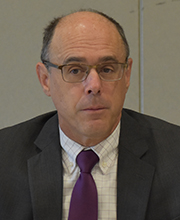
GUY COVIELLO, president and CEO, Youngstown/Warren Regional Chamber: Post-Covid we have seen a record number of leads for economic development projects. We see significant job growth coming to this community. And we see it from very large companies. If we think about the announcement we made in December that Kimberly-Clark is coming here for a manufacturing operation – Kimberly-Clark is a Fortune 100 company. It provides great pay, great benefits, great working conditions.
Foxconn has put a stake in the ground here and we anticipate significant growth. Foxconn is a Fortune III company, third-largest employer in the world, 1.2 million employees. It also provides great pay and benefits for its employees.
Those companies are going to get their workers. They have the wherewithal to do whatever it takes to get their workers.
We must increase the population to provide those workers. [Otherwise,] they’ll come from our existing small, family-owned mom-and-pop operations that will close. There’s no way they can survive. There’s no way they can compete.
So we’ve taken this up [to protect our members] as the No. 1 priority from an economic development standpoint. Having these large companies like Kimberly-Clark and Foxconn come here could hurt our economy if it forces other companies that are the lifeblood of our community to suffer.
JIM KINNICK, executive director, Eastgate Regional Council of Governments: We’ve had five decades of population loss. If you look at the city of Youngstown, it was a city of 160,000 people. It’s down to 60,000. This shows we have a shortage of people in the area.
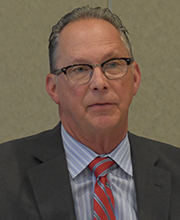
Now you turn around and bring additional businesses and commitments and investment to the area. We have that worker shortage.
When you also look at the median age of the worker – locally we’re at 43.7 years old – when the national average is 39 years. So we have an older workforce. Older workforces are retiring. We don’t have that younger workforce. It magnifies the need to bring and keep younger people in our area or bring younger people back.
When we talk a lot about the three R’s of repopulation [retain existing talent, return homegrown talent and receive refugees], we place much of the focus on refugees and bringing immigrants here, which is certainly an effort we have to take on.
But retaining our young people and getting our young people to return is vital also. And the quicker fix certainly, is to find and focus on the younger workers, to keep those people here and bring those people back.
JAKE RICKERT, director of workforce development, Penn-Northwest Development Corp.: Absolutely. Population is a leading indicator of the economic health of a region. A healthy, growing population stimulates economic opportunities, higher income, availability to economic resources, recreation, innovation.
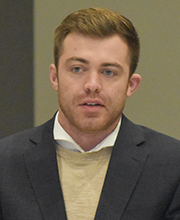
A great example is Austin, Texas. It’s growing at a rate of around 50,000 people per year and it’s all under the guise of “Keep Austin Weird,” this culture base that they have there. And they’re getting men and women of all ages.
In contrast, Mercer County has lost about 30,000 people over the last 40 years. This has led to significant shortages in our workforce. The capabilities of our manufacturing and health care industries have declined.
Other cons are our tax base and our representation in the state and federal legislatures. It’s increasingly important to keep young people here and that we retain the young adults who attend our local education systems.
The average age in Mercer County is around 45 years. In the next 10 to 15 years, some of those core individuals, those core leaders, the champions of industry that these businesses rely on, are going to retire. And we don’t have skilled or experienced young men and women to step into those roles when they leave.
We have to find a solution to attract and retain young men and women.
JULIE MICHAEL SMITH, consultant, Mahoning Valley Manufacturers Coalition: From the manufacturing perspective, we are sensitive to and interested in all three R’s. But as Jake [Rickert] has initiated the conversation, we’re very focused on retaining youth and keeping them in our community. Very specifically in manufacturing. How do we make those careers appealing? Beyond that, how do we create a community that’s attractive for young individuals?
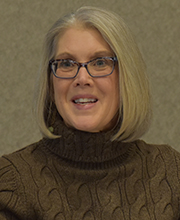
I was talking to my son last night about this, about this event this morning. He’s 20 years old and away at college, as are most of his friends. He said that most of them love this community. They want to come back here at some point but they say they grew up here and they’ve experienced everything. They want to spend time away. When it’s time for them to raise a family, they want to come back to the community.
Now, the timing may intercede. But they have a sense of wanting to come back to the community – but after they’ve gone someplace else where they’ve had new experiences and new opportunities.
So how do we create a culture and a community that provides those opportunities and interests for our young adults? And specific to manufacturing, which is a whole other issue: How do we attract young individuals into those manufacturing jobs?
As Guy [Coviello] mentioned with Kimberly-Clark and Foxconn and Ultium, those are very large companies that have the wherewithal to attract employees. But even they will face some challenges because often manufacturing is not seen as the desirable position.
Many individuals don’t even know what manufacturing is. They think things just come on an Amazon truck. They don’t know, understand how things are actually made.
That’s a significant challenge as well and hopefully part of the solutions we can talk about.
EMIL LISZNIANSKY, consultant with Envision attached to Eastgate and its repopulation project: We have to look at what other communities have done, what’s worked, what hasn’t.
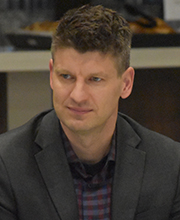
One of those places is Utica, New York. It’s upstate, post-industrial, legacy Rust Belt community that went from 100,000 peak population down to 40,000. So they lost a lot of people, very similar to the Youngstown story.
And what they did was go all in to embrace refugees. This started back about 1980 and since then they’ve slowly built their population. A quarter of all their residents now are foreign-born, which is dramatic for a place that had very few refugees beforehand.
They created a welcome center. And we’re using this model to have a similar multifaceted facility here in Youngstown that would not just welcome the refugees and work on their cases. It would also connect them to employment through a preferred employment program, connect them with housing resources, connect them with wrap-around services.
A refugee coming into the country is very likely to never have dealt with things like debt and taxes the way we do in our country. Usually in other countries these things are taken care of. Taxes are just withheld.
Things like health care. How do you access our health care system? Most countries have single-payers. These are all things that would be addressed in our welcome center.
BUSINESS JOURNAL [To Lisa Long]: Your agency has been doing this since the Holocaust. What works? What doesn’t work?

LISA LONG, financial resources development director and CEO-designate, Youngstown Area Jewish Federation: We’ve been doing things very similar to Emil [Liszniansky], realizing that we can’t do this alone. We recently partnered with the chamber and we’re sitting on its steering committee, giving a
multiyear commitment to its efforts as well and a grant. We’ve been working with the chamber and talking to communities that have been doing these efforts because there are many communities like ours. Why re-invent the wheel? Let’s learn from communities doing this.
We’ve been fortunate to reach out to Jewish communities who have been doing this. [And to groups such as] See KC in Kansas City, Tulsa Tomorrow, Boomerang Greensboro. They’ve been modeling this.
We were able to do this on a small scale during the Ukraine crisis and bring in some refugees. So we have expertise in that area as well. We’ve been looking at modeling that.
We did this during the ’80s in bringing in Soviet Jews from the former U.S.S.R. and building what we called “Moscow on the Mahoning” and settling quite a few families here.
We’re concerned about the same things that Guy [Coviello] and the chamber are, that a lot of our people within the Jewish community are made up of very strong multigenerational family businesses. If our family businesses lose employees and their kids go to bigger cities, what happens?
At our campus on the North Side, which serves the Jewish community and also the greater community as well, we like to say that we serve “Baby to Bubbe.”
We have an early learning center, all the way up to a nursing home. We serve people of all faiths. We were built to serve 8,000 people and we’re down to 1,200 Jewish people in the five-county area.
So we’re looking to bring in and bring back more Jewish families to this area and really bring back families of all faiths. Because if we can make Youngstown a better place for all of us to live, then it will attract all families. With a rising tide, all of our ships go up.
We’ve been working through our Thomases Family Endowment that gives grants to local organizations to try to enhance the quality of life here in Youngstown, to attract young families back to this area, or make sure that people stay here.
My family is a success story, too. My husband grew up in Columbiana County, never thought he’d move back. And we moved back here 12 years ago.
I grew up in Chicago. But I couldn’t be happier. Moving back to Chicago was never on our radar. Moving back here always was.
The opportunities that you can have here professionally – and for your kids – are just amazing. Get that story out there. Because a lot of times we think that it’s a glass half-empty. It really is glass half-full.
But a lot of our organizations have been trying it on our own. We finally have this groundswell effort of all of us working together. And that’s what it’s going to take. We need to put all of our efforts together to make a big splash.
BUSINESS JOURNAL [To Nancy Voitus]: Your organization, Catholic Charities, has been in the resettlement business since the turn of the 20th century, even before. The church was instrumental in settling the earliest immigrants into the Mahoning Valley and its industries.

NANCY VOITUS, executive director, Catholic Charities Regional Agency: Refugee resettlement is one aspect of this whole repopulation effort, how other communities have been able to grow from this effort.
So certainly we want to be part of that; we want to be partners in this. Currently the Diocese of Youngstown has a contract with the Diocese of Cleveland for immigration legal services where we have somebody assigned to this area. We’re working with them on becoming legal, on correcting documentation efforts and retaining them.
When we talk about recruiting in the form of refugee resettlement, it’s important for the community to understand that we’re talking about refugees who are people leaving their home countries because they are forced or compelled.
We want to be that welcoming community because of why they’re leaving. They don’t know [our customs, ways of everyday behavior] our culture. We want to be that welcoming community and help them with all of these things like housing, like education, like employment.
These are people who have left their country because of violence or threat or harm. They are looking to have a better life. We want to be part of that effort to help them to a better life.
BUSINESS JOURNAL [To Angelica Diaz]: Tell us what you’re seeing.
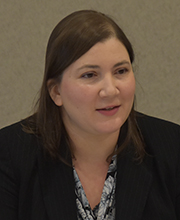
ANGELICA DIAZ, executive director of OCCHA: We are the hands and feet. We do the work. In 1972, OCCHA was created – the Latino community was coming in from Puerto Rico and they had various struggles. So we created OCCHA.
OCCHA is that place where families can meet and get those wrap-around services, food, clothing.
Whenever families come into the area, they don’t know where to go. They don’t know how to navigate the system. That’s where our staff comes in and helps them navigate the system, whether it be housing, whether it be employment.
Like I said, We’ve been doing this since 1972, and we still provide. We see a need. When these families come into our communities, they need that support.
And so agencies like ours, like Catholic Charities, are so important and so vital. We make sure that these families are able to put down roots and be self-sufficient.
BUSINESS JOURNAL: This brings us to the political question because part of the recruiting of new residents is attracting immigrants and refugees. In today’s political environment, immigration has a negative connotation. How do you address that? How do we get the community to rally around inviting the undocumented, the dreamers, and work with people to give them job skills?
COVIELLO, Regional Chamber: We are not in support of welcoming the undocumented. We’re not in support of welcoming the dreamers. We’re not in support of anything that is going to stress social services and not be somebody that our members can’t hire.
Our members cannot legally hire an undocumented person.
We are very careful to use the term legal immigration and make sure that we’re attracting the people, the refugees through programs like Catholic Charities, where there is a very thorough vetting process and we’re bringing people that are going to be self-sufficient, through the Jewish Federation, which has a long-standing history of accomplishing this.
Using the Jewish Federation as an example to the naysayers who don’t want us doing what we’re trying to do here.
We say, “Where would this community be if, many years ago, we didn’t welcome refugees from World War II?” Think about the people in this community, multiple generations of business owners and taxpayers and citizens who have made this community what it is.
We want to be very careful about that. We are very careful about legal immigration.
On a personal note, my kids are foreign-born and we went through a very thorough, expensive process to bring them here legally. And so personally I don’t like the idea of others not having to go through that process.
We want to help our members get employees. Documented citizens is the answer.
BUSINESS JOURNAL: Do you run into any pushback from members telling you, “I don’t want the chamber getting involved in repopulation”?
COVIELLO, Regional Chamber: I get a lot of support from our members. I could use more. MVMC, for example, because the community needs to hear that from the people who run our factories, that they need these people.
We get it [pushback] from citizens. We get it from ordinary people who say, “We don’t want immigration in our community.”
And so we have to educate the community on the importance of this. It’s not going to be easy.
I met last week with a representative from another town in Ohio who has had a significant Bhutanese population move into that town. There are cultural differences that we need to help folks get through.
He told me about how in Bhutan, when you get pulled over by a police officer, you put your hands in your pockets. That’s a recipe for disaster in the U.S.
Educating that community’s police force and educating the immigrants who move in about how to handle such situations [is a challenge].
LONG, Jewish Federation: We’ve talked quite a bit with Guy and the chamber as well about creating those cultural welcomes. You’re bringing in folks, as refugees, people from Ukraine.
But even if you’re bringing in people from other parts of the country, we must make sure they have a cultural welcome. So that wherever they come from, even from other parts of the country, they feel welcome here. That could be their faith or their ethnicity, whatever.
That includes the foods those folks are used to eating. They should feel welcome in the community in the right ways. This is crucial.
They’re not just coming here for a job. Then they stay here a little bit before moving on to the next place. If we do that, then we’re just setting ourselves up for the same problem in a few years.
What we can do for those wrap-around services is to make sure that we’re a really good landing spot, whether that’s the welcome center or in other ways of setting up our residents to genuinely welcome them and give them a nest.
VOITUS, Catholic Charities: The education effort is important, too. The community needs to understand the difference – and this is something I really learned in the last year – the differences among a refugee and a migrant and an undocumented.
People lump everybody into this. They think that they are all illegals, that they all swim across the Gulf of Mexico. That’s not the situation.
All my grandparents came directly from Italy. They came over for whatever reason as immigrants. And that’s how we ended up in Youngstown, Ohio.
When we talk about refugee resettlement, we need to be sure that people understand that this is a legal process. People are vetted very intensely before they come in. They’re granted that status when they come into the United States. This is something to build our community on, not to infuse some negative element.
CHRISTOPHER COLON, co-founding director of Thrive Mahoning Valley: At Thrive we have really noted that being an immigrant has negative connotations. In our work we have recognized that for over six years.

And we think that a lot of that comes from two things. It comes from people not knowing these people and their stories. We have challenged that by getting the word out and spreading those stories.
We’ve had people convene for community conversations on immigration. We just had one in December at the Unitarian Church in Youngstown where people spoke from the Latin-American perspective.
We’re looking forward to doing the Middle Eastern or the Asian-American perspective in March. We’re going to do those once a quarter to try to get the community to understand what these perspectives are.
In addition, we need to advocate that the community become more welcoming by putting policies in place that align with the Welcoming America’s Welcoming Standard, which we have been championing for five years as well as being a member of that organization.
LISZNIANSKY, Envision: From an economic standpoint, people often look at their pocketbooks to make decisions and base their biases on that.
The data prove strongly that immigrants and refugees are entrepreneurial. They’re 30% more likely to start a small business.
Refugees and immigrants pay taxes. Declining tax bases locally in all of our communities has been a quality of life issue for decades. Regions with more foreign-born people proportionately correlate positively with higher economic growth.
SMITH, Manufacturers Coalition: Manufacturers as a whole are interested in working with, targeted, underserved, underrepresented groups across the board. Key to that effort is education, understanding the various statuses and requirements. But also looking at targeted populations that we regularly engage with that are also marginalized, such as returning citizens, justice-involved, or individuals suffering from substance abuse disorder. Those are also niche populations for whom it’s important to be part of this conversation. They, too, can be part of our workforce.
I was looking at some data earlier today and even our participation of individuals in the workforce, particularly for the youth – actually for those that are disengaged, from age 16 to 24 – is twice the rate of the national average.
That’s one indicator of a significant part of the population that’s not actively involved as participants in the labor force. And if we looked at those participation rates of these other marginalized populations, we would see similar challenges as well.
So it’s a multifaceted multidemographic. When we start slicing and dicing, we also need to keep in consideration the other populations also in our community, also marginalized or misunderstood.
KINNICK, Eastgate: … I didn’t say repopulation a year ago – ever. Now I’m in that space and I’m trying to get stronger, and I appreciate learning from experts around this table.
But that question did point out a weakness. That message is not getting out. And we have had some one-pagers. We talk about this. We’re often quoted. But nobody’s talking about the process of legal immigration and how we’re going to bring the people back to the area. So, it sheds some light on an area that Eastgate has to strengthen when we broadcast the message on what we’re doing with repopulation.
BUSINESS JOURNAL: So how are we going to do that?
COVIELLO, Regional Chamber: We put some additional resources into that effort. We brought somebody on board to help us spearhead what we’re doing to help the population rebound. Part of it is messaging. We need to do that better: not just properly sending a message on legal immigration but properly sending a message in this community about how we can retain people. Properly messaging domestically so that people return.
It’s not all about refugees and legal immigrants. There are a lot of other ways that we need to be engaged to increase our population.
To some extent, the immediate solution for our organization, the chamber and our members, is to tap into the underserved population already here that is capable of working, capable of being educated, but is disconnected – whether it’s the lack of public transportation, whether it’s the lack of knowledge.
We do have a disengaged part of our population. There’s also a message we must send to our youth. We have research that shows that throughout northeastern Ohio, more girls than boys graduate from high school and are going to college. But, by far, girls are not majoring in the in-demand fields.
We need to look at that. Why aren’t we properly messaging to girls in high school about the jobs that will be there when they get through college?
BUSINESS JOURNAL: So this is 10-year effort?
COVIELLO, Regional Chamber: I’m not sure it’s a 10-year effort. It might be more than that. But it has to start somewhere.
BUSINESS JOURNAL: We’ve talked about immigrants and refugees, the legal side of that. But that’s just one small part. Isn’t the real nut keeping people here and bringing them back home?
COVIELLO, Regional Chamber: That should be No. 1, retaining what we have.
BUSINESS JOURNAL: How are we trying to bring people back home? At Christmas time when families reunite and the hotels are filled because families are getting together, how do we get that message to those people at that time?
KINNICK, Eastgate: We’re our own worst enemies because we don’t talk about the good things going on in the area. The quality of life is a major issue for economic development and our young people. And the people who left need to hear about the good things going on: our proximity to Cleveland and Pittsburgh for sporting events and concerts, the Covelli Centre, the amphitheater in Warren, the amphitheater downtown.
The downtown is coming back: the investment in downtown Youngstown, investments in Warren, and additional investments coming. We have to start with our urban centers and expanding them. If you look back – and I’ve been a lifelong resident – people stayed away from our downtown areas.
We’ve got to bring people back. The housing in downtown Youngstown: There’s a waiting list for apartments.
That’s great. But we don’t talk about any of this. We don’t talk about the good things. Everybody still wants to revert back to 50 years ago and talk about those days and the Rust Belt. And I vowed I’d never say that but I’ll just say it because people still bring it up. And it drives me crazy.
When we look at what we’re doing, the efforts on the Mahoning River and in getting the dams out and returning that river to a free-flowing, clean state, and the investment we have coming and have already started with the communities along the river.
We have seen Lowellville invest. Struthers is investing. I’m working my way upstream. And we have additional money coming for Youngstown’s efforts, along the river in Warren. And we continue north from there. It’s all included. We have to bring everything together and talk about the good things.
We need the people around here – I’ve met a banker [at a meeting I attended] who said, “Oh, this place [disdainfully].”
[I’m thinking] Come on now. We’ve been working hard for years, many years, in this group. Many of the people in that room, for the last three to five years came together to talk about the good things: the industry coming to the area and the jobs available and the cost of living.To buy a house here versus buying a house in Columbus or Charlotte. And I use those two examples because I tell everybody that I’m trying to stop what happened in my family.
I have a son in Columbus and a daughter in Charlotte. Why are they there? They’ve been gone for 10 years. We just didn’t talk about [them leaving] and we’re made aware of all the good things going on. A lot of that has transpired in the last five to eight years, too.
So it’s going to be a community effort. We certainly are going to need our business partners and we’re going to need everybody talking about the good things going on here.
BUSINESS JOURNAL: Brings us to the housing issue. Yes, there’s a waiting list for the downtown apartments. However, we have a lot of housing stock that could be rehabilitated. We have many vacant houses. The rents are going way up for low-income people. We have a housing issue. How do we fix that? Granted that’s out of your domain. What do we do?
COVIELLO, Regional Chamber: We’re on it.
KINNICK, Eastgate: That’s a problem everywhere. I was in Columbus a week and a half ago, in Washington just a couple of days ago. I’m hearing it from every community that attends these seminars and meetings.
Eastgate has brought on a consultant to do a housing assessment and strategy for Mahoning and Trumbull counties. Part of that is a six- to nine-month effort. We’re probably at the midway point.
We’ve been holding stakeholder meetings and we have another coming up in March. The consultant is bringing in the industry, developers, builders, bringing in the community, community leaders together, gathering information.
Part of that assessment is to drive every street in both of those counties and gather the information about what we’ve got to do. It’s important to talk about the strategy. It is not just to build a new development in a suburb. It’s talking about multifamily housing that we can build in our cities.
How do we bring back and take care of some of the houses that need repair? One challenge we already know is the gap, the finance gap.
To build a house – I’m just going to make some numbers up – $200,000 to build a house in Columbus, $200,000 to build a house in Youngstown. In Youngstown such a house sells for $300,000. It sells for $400,000 in Columbus.
Your builders are saying: Why would I build a house here? So we’re going to need help. We’re going to need resources from the state or federal governments to close those gaps or provide incentives to build here.
At the end of last year we met with a developer who’s in many of the communities, in many of the states. [He informs us,] “I’m sorry. That takes city blocks that were used to house your elementary schools in neighborhoods.” They take these buildings, clean them up. They build 40 to 60 multifamily units in that city block, get tax incentives. Again, they make it financially sound for them but we get 60 new units.
And then they say in every one of those communities that they’ve done that – in a 16-state footprint – they see success, they see the community, the housing around it. They invest because now there’s new housing in their neighborhood.
So it’s a challenge. We hope to get additional information from the stakeholders next month and roll out our strategy in the spring.
BUSINESS JOURNAL: Wow, that’s a lot to take in. Any other feedback on housing?
Rickert, Penn-Northwest: About Mercer County’s situation. We’re in the same boat. The cost to develop a house significantly outweighs the housing market. I just spoke with a developer. He said a three-bedroom, two-bath, 2,000-square-foot home – just the shell alone – comes in as starting at about $120,000. That excludes gas, water, electric. That excludes the installation of appliances. That’s just the shell of the building.
It’s very easy for that cost to go up to $200,000 to $250,000. Our average income is about $55,000. Selling a $300,000 home just doesn’t make sense. We can’t fill that void.
We need help from the state to mitigate that gap between housing development and the market cost.
BUSINESS JOURNAL: Is any help coming?
COVIELLO, Regional Chamber: What Jake and Jim referred to is on our public policy radar. We need the Pennsylvania and Ohio state governments to help our communities that have suffered significant population loss and have low property values.
We brag about affordable housing but that’s not working in our favor because the value of the home after you build it is less than what it cost to build. So you’re not going to get a builder here.
We need incentives to build housing. What we’re seeing, especially with a lot of the job creation in Lordstown and Ultium Cells and Foxconn, is people buy and build homes about 40 minutes away, places like Hudson and Stow. There they get an ROI where you can find a builder.
[Our situation is such that] it’s not building our tax base or creating an economy with the income from those workers.Public policy has to change, especially around what young people want. Throughout all of our communities, we have minimums: minimum acreage, minimum square footage, minimum distance from your neighbor.
What we’re seeing from the younger generation is a desire for walkability. They don’t want those kinds of minimums. They want small. And they want to walk to the entertainment. They prefer to walk to work. We have to rethink our building codes and our zoning codes.
BUSINESS JOURNAL: [To Diaz and Colon] What housing needs do you see from the people you serve?
Diaz, OCCHA: Last year we served about 780 families. A good chunk of those families were looking for homes. They came here and couldn’t find a place to stay, a place to live.
We know of a few families who came to the area and then ended up leaving because they couldn’t find somewhere safe to stay. So we’ve had to do a lot of referrals and we see a great need.
We see a lot of people facing homelessness. Families, mothers with their children in their cars, sleeping in their cars because they don’t have a place to stay. We are not able to accommodate them and all we can do is refer them. That’s all we can do.
BUSINESS JOURNAL: And you refer them where?
DIAZ, OCCHA: We normally refer them to just temporary housing, Catholic Charities as well.
VOITUS, Catholic Charities: If I could dovetail off of Angelica, most of the calls we get have something to do with housing, whether it’s rental assistance, preventing an eviction, getting into housing because they’re homeless or unstably housed.
What people don’t understand: a third of the population we serve we consider homeless. I always use unstably housed because a lot of people are doubled up or they’re staying with somebody. They’re a minute away from hearing someone say, “You can’t stay here.” They tell us, “My landlord is going to kick me out.”
A third of those people are employed. They’re working. Another third is on some kind of fixed income, whether it’s disability or Social Security. So the one thing we need to talk about is the connotation of what a homeless person is and is not. It’s not the person pushing a grocery cart down the sidewalk.
There’s a lot of unstable housing in the area. What we do when people come in for our assistance, we ask two important questions: How did you get in this situation? What are you going to do, if we assist you, from here?
And when we do budgets with people, we look at the numbers, put their numbers in front of them.
Somebody mentioned rental costs have gone up. People’s incomes have not kept pace. You’re looking at somebody making, $1,000 a month and their rent is $700.
Do the math on what people can afford. And a lot of these people are working and trying to make ends meet. Or they’re trying to get jobs and make those numbers work with rental assistance. We try to prevent people from being evicted.
COLON, Thrive Mahoning Valley: We recognize there’s not one solution. There have to be solutions at every level. Giving incentives to developers is one way.
But we also see efforts like what Youngstown Neighborhood Development Corporation is doing in rehabbing some of our current stock. Or what the YWCA is doing in rehabbing some of the buildings on the North Side to put people in. We see those as viable for welcoming people into our community as well.
We visit places like Erie [Pennsylvania] where we see resettlement agencies develop relationships with landlords, where they’re giving them incentives to bring in people, to reduce having multiple families in one house, and giving opportunities to families to rent with pathways to ownership.
BUSINESS JOURNAL: That’s interesting. You say they’re working with the landlords. Here we see many out-of-town people buying up such properties and jacking the rents way up. Many are sold through tax liens. That’s a big issue.
Colon: That’s policy. There have been some concrete changes to policy in some of our communities already where we saw people being taken advantage of with varying rents. YNDC and Action [Alliance for Transforming Influencing Our Neighborhoods] work hard to change some of those policies. It’s going to take more of that.
SMITH, Manufacturers Coalition: It’s also the housing. We at MVMC recently convened a roundtable of community-based organizations to talk about barriers that job seekers face. One, of course, is housing and having housing proximate to their places of employment because they don’t have stable transportation.
We don’t have [adequate] public transportation in this community. That’s part of the problem as well.
You may be offered a well-paying job or a decent-paying job at Ultium or TJX or at another location. But you need to be able to live in some proximity.
You can’t build a house in Solon or Hudson because you’re not drawing a management salary; you’re an hourly employee. And maybe you can’t afford a car or you’re in an unstable situation. That’s part of it as well.
COLON, Thrive Mahoning Valley: We’ve noticed when we visit other communities that when people come into a community, they want to be close to all the services they might need. That’s why we have been championing this town center model of development.
It’s been successful in a lot of the communities. We see it in Columbiana. While Columbiana is very different from Youngstown, the town center model is where all the services are in one place. You build housing around it.
Because immigrants and refugees, especially coming into our community, are used to that. That’s what they had in the places they’re coming from. They’re used to communal living.
BUSINESS JOURNAL: When you say Columbiana, you’re referring to Firestone?
COLON, Thrive Mahoning Valley: Yeah. Kind of like that model. And there’s some development that’s going to be coming into Warren as well.
COVIELLO, Regional Chamber: There are opportunities to get creative around public policy, especially in terms of housing. We’ve had some very early conversations about tax incentives for employers who would make the down payment on a house for their employees and then the employer would get a tax credit.
If the down payment for a more highly paid worker buying a new house is going to cost $400,000, you’re looking at $80,000. What we would like to see is the employer make that $80,000 down payment and be forgiven an eighth of it for eight years or a tenth of it every year for 10 years – whatever it is – and then that retains that employee.
And then we want the state at the same time to say, OK, for doing that, we’re going to give the employer some sort of tax credit or tax deduction, some kind of tax break to induce people to come here, take the jobs, build the houses.
We’ve also had conversations around tuition forgiveness. And I know the state’s looking at a model; they’re running the numbers to see what’s the right amount or cap and what’s the right number of years.
But the theory is, if we can take, say one-seventh of your tuition and pay for it every year for the next
seven years, your loan, at the end of seven years – there’s a good chance that you may have gotten married in that time and bought a house or you may have kids by then.
The odds of you picking up and leaving are minimal. We’ve been talking with state leaders about those kinds of incentives as well.
BUSINESS JOURNAL: Are those things advancing or are they just in the discussion stage?
COVIELLO, Regional Chamber: We’re in the discussion stage, what kind of cap we need to have on [tax credits for down payments and rates of forgiveness] but progressing.
BUSINESS JOURNAL: Where do efforts stand on establishing tools such as the office of repopulation and a bilingual website that coordinates community information?
KINNICK, Eastgate: The office of repopulation is part of all the funding opportunity we’re looking for with the Appalachian Community Grant Program. That was money made available from the DeWine administration.
It’s $500 million set up for the local-development districts of Appalachia. There’s only four in the state of Ohio. Eastgate is the lead on the one that covers Mahoning, Trumbull and Ashtabula counties.
We submitted an application for $155 million. After a year of planning, I put that application in last December. We’re awaiting word.
They kicked the announcement out till the first or second week of March – it was going to be the first or second week of February – because they were inundated with applications.
They awarded some planning money for the first year. Around $420 million was available and they got requests of almost $2 billion. We feel very strong with our effort there. We came together as a region.
We submitted [Eastgate was the lead applicant] and it included 41 projects for $155 million. But in that was money set aside for a welcome center, to establish it and get it up and running.
That’s not sustainable after a couple of years but we look to state funding to continue that effort and other opportunities. We feel very good about where we’re at for our 41 projects. Hopefully, we’ll have a good announcement in the very near future.
BUSINESS JOURNAL: Some final thoughts?
LISZNIANSKY, Envision: Everybody brought their expertise here today so I just will reinforce on the housing issue, the need for state and federal subsidies to make the numbers work in the Valley and the removal of barriers.
The zoning issue is a national phenomenon. It’s an American thing to build single-family detached homes. Now we need to build a little denser, a little closer to transit, a little closer to jobs and services.
COLON, Thrive Mahoning Valley: Thrive Mahoning Valley does operate a bilingual resource. That’s how we started six years ago. It’s on our website, ThriveMV.org.
This year we are expanding the language offerings to include five more languages hopefully and to expand offerings into a print guide for Youngstown City Schools students and families.
One thing I want to close on is the three R’s: receiving, returning and recruiting. We have to think of them as cyclical. At 42, I’m on the cusp of young and old. Our young people want to live in vibrant communities where they have a lot of options as far as food and services available.
And so if we attract immigrants and refugees, our young people are going to want to stay here because we are more vibrant and there’s more opportunity. … Everybody here today is welcome to join us when we meet at OCCHA every month and host the immigrant coalition that we’re calling the Newcomers Network.
Rickert, Penn-Northwest: It’s evident that repopulation is a top priority in western Pennsylvania and eastern Ohio. We see partners coming together to collaborate and find solutions.
Housing remains a top priority, whether the solution is some state and federal support to lower the costs of construction or rent for young professionals stepping into the workforce or retirees stepping down and vacating these homes with lots of land.
LONG, Jewish Federation: In the last 50 years we’ve been losing seven people a day. And we need to all come together to reverse that trend and it’s going to take all of the R’s – retaining, returning, recruiting, receiving – and then when we’re receiving, resettling those folks and genuinely being a welcoming community. If we want to bring people back here, we all have to be willing to work on all five of those R’s.
VOITUS, Catholic Charities: Repopulation is a multifaceted issue. Having these roundtables and bringing people together to discuss this topic is important. It’s important that we look at all aspects of the community. Certainly, retaining young people and keeping them here is one thing but it’s the whole picture – housing, employment, services, entertainment, community – that’s very important to keep in mind.
Two of the things Catholic Charities is looking at closely are being part of that welcoming community and looking at how people can be self-sufficient.
SMITH, Manufacturers Coalition: Today we’ve had an opportunity to talk about the challenges we face regardless of how long it takes to solve them, like how long it would take to establish an office of repopulation and become a community like Solon. Northern Ohio has become an example for repopulation, in terms of recruiting and resettling and whatnot. And that’s a longer play.
Because of time constraints, we didn’t get to discuss what more we can do to retain the youth in our community or even those in mid-career who may be looking to migrate.
We can be our own worst enemy because we walk out the door today, having talked about what a great community this is. What are actual things that we can do today? What can we do immediately?
Policy issues and tax credits can be part of the solution, but those are longer-term plays. What can we do right now to start addressing the problem today?
KINNICK, Eastgate: I concur with what everybody’s commented on today. It made me think back when I came to Eastgate eight years ago. I tried to tell the staff and I tried to portray that in everything that we tackle, don’t be afraid to swing and miss. If you need help, bring in expertise.
Those are a couple of things that the people in the Valley were afraid of in the past. But when you get this group of strong-spirited individuals and organizations together, we’re starting to see some of the fruits of our labor and successes.
One thing that we talk about when we go to Columbus for funding, when we go to DC for funding, is the partnerships we have and the team effort and truly unified vision.
COVIELLO, Regional Chamber: That’s right. We need to work together to set ourselves apart, keeping in mind that the competition is fierce. When Emil talked about how we’re trying to emulate some other communities, that’s our competition.
This workforce shortage, population shortage is nationwide. It’s especially challenging throughout Ohio. And so, keep in mind when we talk about bringing boomerangers back, other communities are tapping into people here being recruited to boomerang back to their towns. This competition is fierce.
When we announced Kimberly-Clark, I had somebody standing next to me say, “Well, they’re all going to come here now because we’ve got the good-paying jobs now.” I’m thinking to myself, “No, everybody has good-paying jobs. It has to be quality of life. We have to do something that’s going to set us apart.” And so let’s not lose sight of the fact that we have fierce competition out there.
Diaz, OCCHA: Our community has potential to bring, to retain, to attract newcomers, and be successful. One of the first steps is coming together as a community, having these conversations, and making a clear plan, educating the newcomers. Not only the newcomers but our community. But we do have potential. And I personally came back. I grew up in the city, and I left for 14 years and I came back, because my family was here, because it was a less expensive place, less expensive to raise a family.
Pictured at top: Nine community and business leaders participated in The Business Journal’s Repopulation Roundtable, the first in our 2024 series of focused discussions. Seated are Julie Michael Smith, Nancy Voitus, Lisa Long and Angelica Diaz. Standing are Jim Kinnick, Guy Coviello, Emil Liszniansky, Christopher Colon and Jake Rickert. The roundtable discussion took place Feb. 15 at Waypoint 4180 in Canfield.
Copyright 2024 The Business Journal, Youngstown, Ohio.
